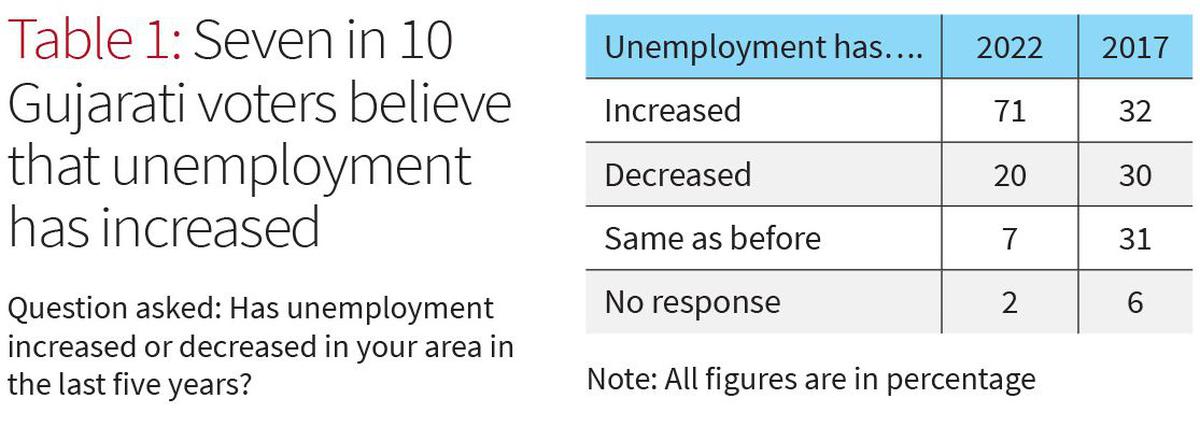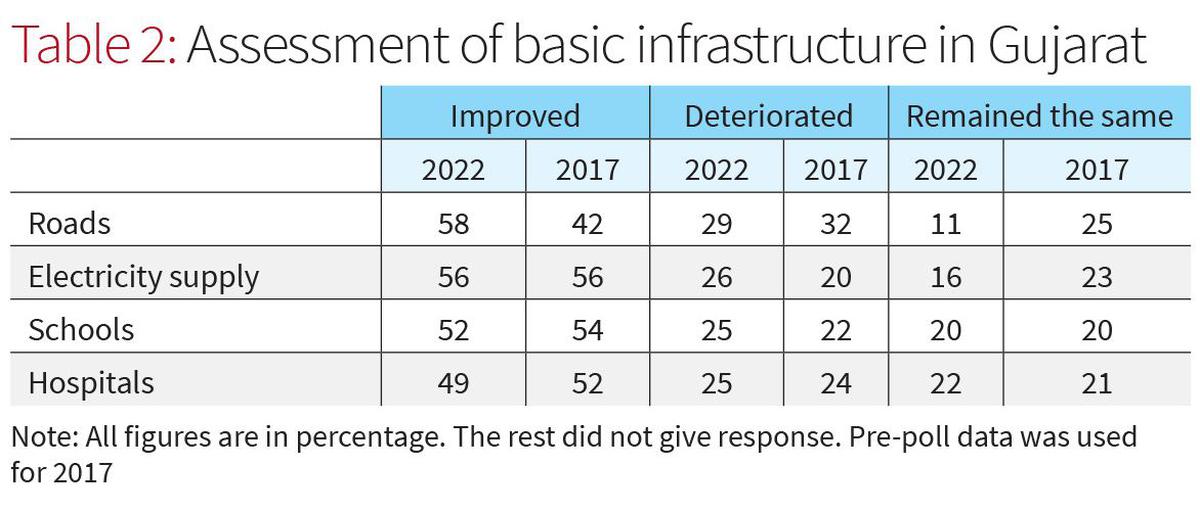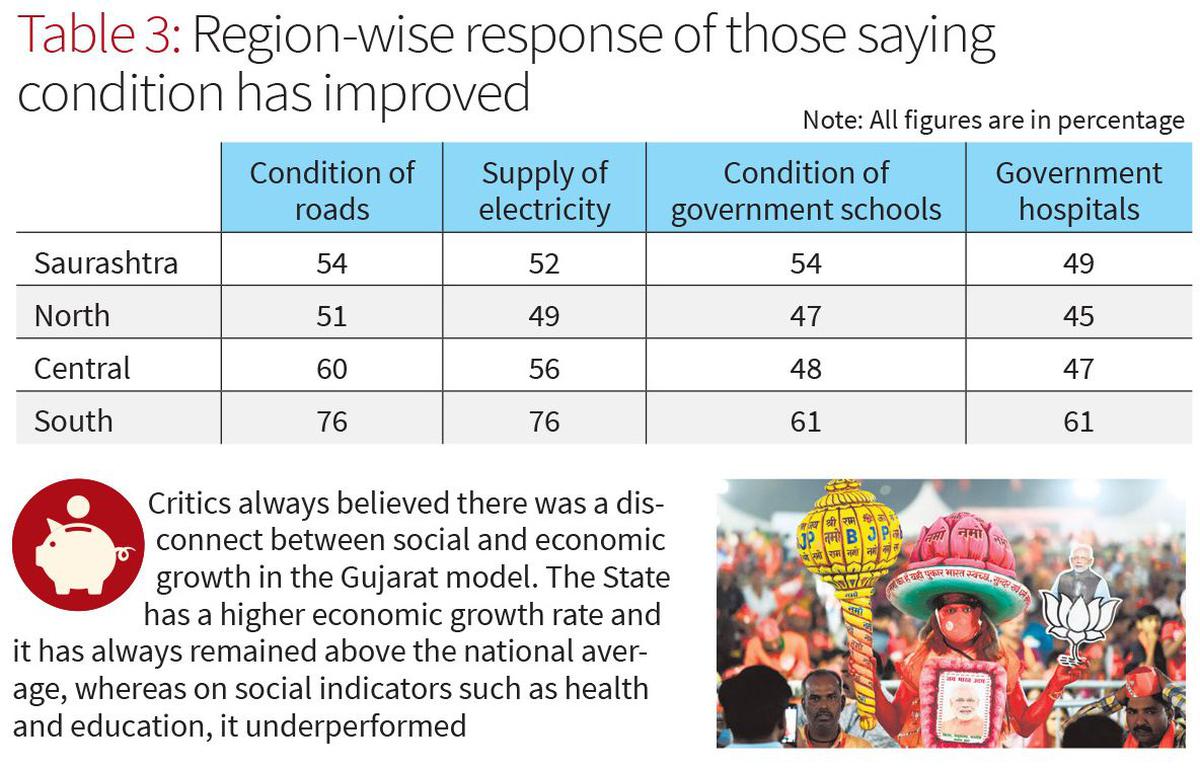[ad_1]

BJP supporters during Prime Minister Narendra Modi’s election rally at Dehgam in Gujarat on November 24, 2022.
| Photo Credit: Vijay Soneji
The ‘Gujarat model of development’ has become a rhetoric during Indian elections. In fact, during the 2014 Lok Sabha election, it was used in the electoral campaigns by the BJP. Narendra Modi was projected as vikas purush who could replicate the model to make India a developed country.
However, during the 2022 Assembly election in Gujarat, the Aam Aadmi Party (AAP) overtly challenged the Gujarat model and claimed it to be superficial and which ignored the social sectors such as health and education.
The AAP boasted about the ‘Delhi model of development’ and underlined the poor status of health and education in Gujarat during its election campaign. However, the recent election results from Gujarat suggest that the Gujarati voters negated the Delhi model and chose the incumbent government with clear support. The BJP’s victory prompts us for a quick enquiry about whether Gujaratis voted for the Gujarat model or there were other political factors that explain the electoral victory.
Critics always believed that there was a disconnect between social and economic growth in the Gujarat model of development. On the economic front, the State has a higher economic growth rate and it always remained above the national average, whereas on social indicators such as health and education, it underperformed.
Lokniti-CSDS data showed discontent of the voters on the issue of employment; close to seven in 10 Gujarati voters said unemployment has increased in Gujarat in the past five years. This figure is alarming as the proportion of those saying this has gone up to 71% in 2022 from 32% in 2017 (Table 1).

In the realm of the ‘Gujarat model’, the State also developed its physical infrastructure such as roads and power supply to attract investors. Some believe that in lieu of industrialisation, these facilities did not benefit the commoners. Sensing the pulse of the people, the Arvind Kejriwal-led AAP also tried to lure them by promising free electricity as he has done in Delhi.
When people were asked about the condition of electricity supply, close to three-fifths (56%) said the power supply has improved and a similar proportion (58%) said the condition of roads has improved. Yet people gave more points to the government for developing roads than improving the power supply. This can be ascertained from the fact that in 2017, 42% of the voters said that the condition of roads had improved and this has increased by 16 percentage points, whereas on the issue of power supply, proportionally more people said that the condition has deteriorated as compared with 2017. On social infrastructure such as schools and hospitals, close to half of the voters said that the condition of schools (52%) and hospitals (49%) has improved, though with some decline if we compare these figures with the 2017 Assembly election study (Table 2).

Voters from different regions of Gujarat shared different opinions on the improvement of basic infrastructure in the State. It is evident from the data that people in Saurashtra and the north regions of Gujarat were less likely to believe that the condition of roads, power supply, health and education has improved as compared with people from central and south Gujarat (Table 3). This variation indicates that the fruit of development was not equally distributed among different regions of Gujarat and that can explain the BJP’s varying performance across different regions to some extent (shown in overall piece). There can certainly be other factors that can explain the BJP’s massive victory in Gujarat like the changing nature of electoral contest from bi-polar to tri-polar contest resulted in vote split and the like.

(The authors are researchers at Lokniti-CSDS)
[ad_2]
Source link